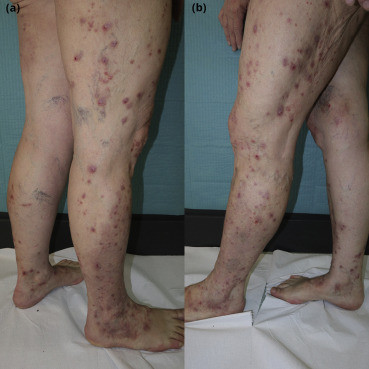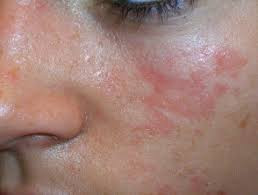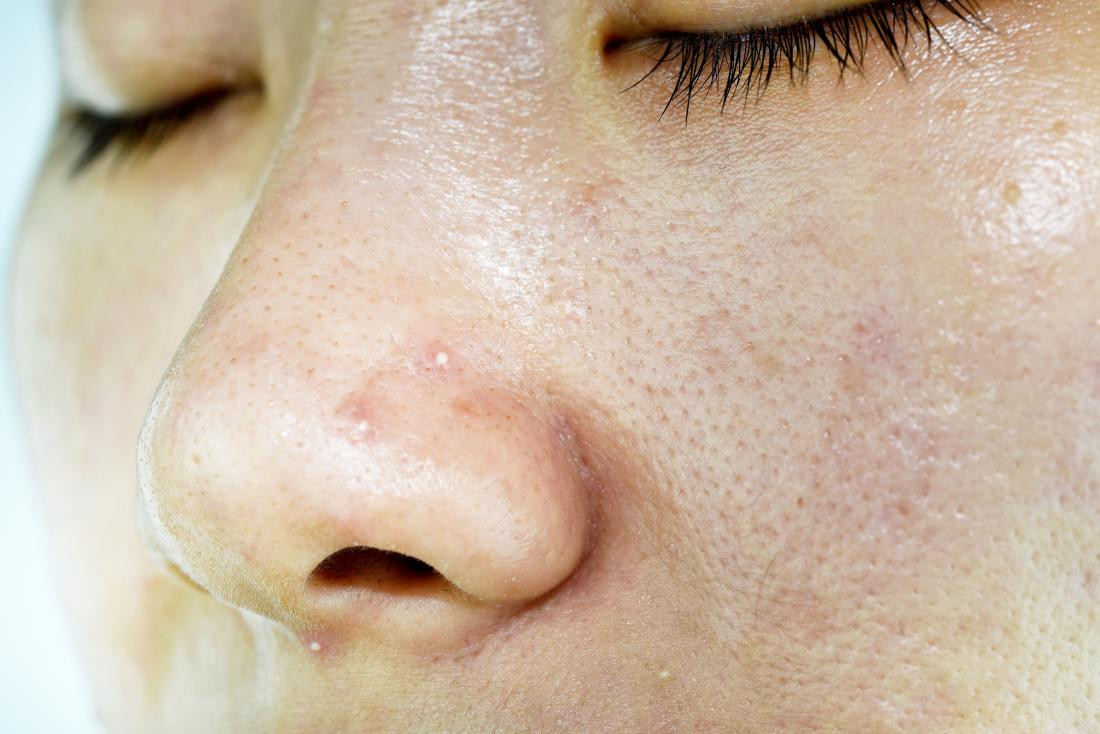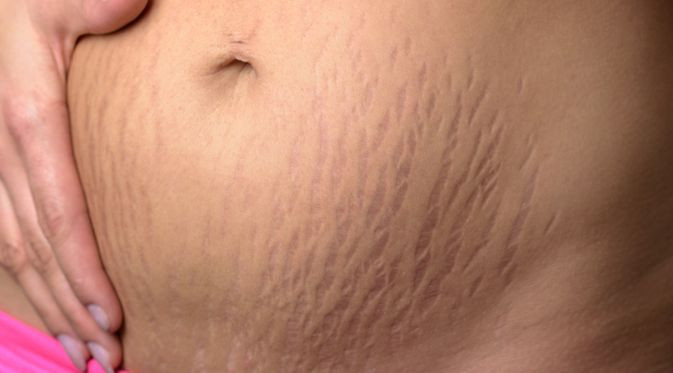Definisi
Vitiligo adalah sebuah kondisi ketika kulit kehilangan warna aslinya. Biasanya, vitiligo muncul dalam bentuk seperti plak dan membesar seiring waktu. Vitiligo merupakan penyebab kehilangan warna kulit yang paling sering terjadi. Kondisi ini dapat terjadi pada semua usia, baik anak-anak hingga orang dewasa, namun puncaknya terjadi pada usia 20-an hingga 30-an. Angka kejadian vitiligo berkisar antara 0,1%-2% di seluruh dunia dan terjadi pada seluruh ras di dunia.
Penyebab
Penyebab vitiligo secara pasti belum diketahui. Namun, penyakit ini seringkali berkaitan dengan berbagai penyakit autoimun, yaitu penyakit yang melibatkan penyerangan pertahanan tubuh terhadap sel tubuh sendiri. Selain itu, penyakit ini melibatkan berbagai faktor lainnya seperti genetik.
Vitiligo terjadi ketika sel-sel penghasil melanin (melanosit) mati. Melanin adalah pigmen atau zat yang memberikan warna pada kulit, rambut, dan selaput pelangi pada mata. Pada bagian kulit yang mengalami kematian melanosit terjadi perubahan warna kulit menjadi lebih terang atau putih.
Faktor Risiko
Faktor-faktor yang diduga berkaitan dengan vitiligo adalah:
- Adanya penyakit autoimun
- Riwayat keluarga (genetik)
- Pemicu lainnya seperti stres, kulit terbakar yang sangat parah, atau cedera pada kulit yang disebabkan oleh berbagai hal (misalnya bahan kimia).
Riwayat keluarga yang menjadi faktor risiko vitiligo sendiri juga cukup rumit, karena melibatkan berbagai gen. Tidak hanya itu, gen-gen ini kemungkinan harus terpapar oleh lingkungan tertentu untuk menyebabkan vitiligo.
Gejala
Tanda vitiligo adalah sebagai berikut:
- Kehilangan warna kulit dalam bentuk plak, yang biasanya muncul pada tangan, wajah, dan daerah dekat lubang pada tubuh, serta kelamin
- Uban yang muncul terlalu dini pada kulit kepala, bulu mata, alis, atau jenggot
- Hilangnya warna pada bagian dalam mulut dan hidung (membran mukosa)
Vitiligo biasanya diawali dari plak berwarna pucat yang lama-kelamaan berubah menjadi putih. Bagian tengah plak tersebut dapat berwarna putih dan dikelilingi kulit yang berwarna pucat di sekitarnya. Jika ada pembuluh darah tepat di bawah kulit, plak tersebut dapat berwarna merah muda, bukan putih.
Bagian pinggir plak tersebut dapat halus atau tidak teratur. Selain itu, bagian pinggir plak juga dapat mengalami peradangan dan berwarna kemerahan, atau berwarna lebih gelap daripada kulit normal (hiperpigmentasi).
Vitiligo tidak disertai oleh kulit kering, namun plak tersebut kadang terasa gatal.
Berdasarkan luas permukaan kulit yang terserang vitiligo, vitiligo terbagi atas:
- Vitiligo universalis. Pada tipe ini, vitiligo terjadi pada hampir seluruh permukaan kulit
- Vitiligo generalisata. Pada tipe ini, vitiligo terjadi pada berbagai bagian tubuh dan berkembang secara simetris antara bagian tubuh kiri dan kanan. Tipe ini merupakan yang paling sering terjadi
- Vitiligo segmentalis. Tipe ini biasanya menyerang hanya satu bagian atau satu sisi tubuh, muncul pada usia muda, berkembang hingga satu atau dua tahun, kemudian berhenti
- Vitiligo lokalis. Tipe ini terjadi pada satu atau sedikit bagian dari tubuh
- Vitiligo akrofasial. Pada tipe ini, vitiligo terjadi pada wajah dan tangan, serta di dekat bukaan kulit seperti di sekitar mata, hidung, dan telinga.
Prediksi perkembangan vitiligo sangatlah sulit. Kadang, plak akan berhenti tumbuh sendiri tanpa penanganan apapun. Pada sebagian besar kasus, kehilangan pigmen menyebar dan melibatkan sebagian besar kulit. Kadang, warna kulit dapat kembali seperti semula.
Diagnosis
Diagnosis vitiligo biasanya ditegakkan melalui riwayat, keluhan, dan pemeriksaan. Dokter dapat menanyakan riwayat dan keluhan yang mendahului atau menyertai vitiligo, termasuk riwayat penggunaan obat-obatan. Dokter juga akan melakukan pengamatan pada kulit. Selain itu, plak dapat muncul pada bagian yang sehat setelah adanya cedera/luka tertentu. Hal ini disebut sebagai fenomena Koebner. Fenomena ini terjadi pada 20-60% penderita vitiligo.
Dokter juga dapat melakukan pemeriksaan lampu Wood. Lampu ini akan memancarkan sinar ultraviolet bergelombang panjang pada kulit. Pada penderita vitiligo, kulit yang kehilangan pigmennya akan menunjukkan warna putih.
Pemeriksaan laboratorium juga dapat dilakukan. Dokter dapat mengambil sedikit jaringan kulit untuk diperiksa di laboratorium. Pengambilan jaringan ini disebut sebagai biopsi. Pemeriksaan ini dapat dilakukan untuk melihat adanya kehilangan sel-sel melanosit yang menjadi penyebab gejala vitiligo. Tidak hanya itu, temuan lainnya dapat menunjukkan adanya kelainan pada kulit.
Selain itu, pemeriksaan dapat dilakukan untuk mencari adanya kemungkinan hubungan vitiligo dengan kondisi lainnya seperti Goiter (kelainan kelenjar tiroid), anemia (kekurangan sel darah merah), gizi buruk, uban yang terjadi terlalu dini, kebotakan rambut, kelemahan tubuh secara umum, dan sebagainya.
Tata Laksana
Tata laksana vitiligo melibatkan terapi obat, fototerapi (terapi sinar), terapi laser, dan pembedahan. Obat-obatan yang biasanya digunakan untuk mengatasi vitiligo adalah kortikosteroid, penghambat kalsineurin, dan analog vitamin D. Sementara itu, fototerapi dapat efektif mengatasi vitiligo karena memicu pembentukan melanin lebih banyak pada kulit. Jika ukuran plak tidak terlalu besar, dokter dapat mempertimbangkan terapi laser.
Pembedahan hanya dapat dilakukan pada vitiligo segmentalis atau lokalis yang kecil. Pembedahan ini melibatkan penggunaan cangkok kulit (skin graft) yang memiliki melanosit. Kandidat yang dapat menjalani pembedahan adalah penderita vitiligo segmentalis, vitiligo lokalis pada area yang kecil, vitiligo yang terjadi pada bagian tubuh yang sulit dikembalikan pigmennya (seperti garis rambut, punggung jari, dahi, dan mata kaki), serta plak yang stabil.
Komplikasi
Perjalanan vitiligo sulit untuk diprediksi. Pada beberapa orang, warna kulit dapat kembali dengan sendirinya (repigmentasi). Namun, pada beberapa orang lainnya, warna kulit tersebut dapat hilang kembali (refrakter). Komplikasi vitiligo dapat berupa stigma sosial dan stres mental. Selain itu, karena vitiligo merupakan kehilangan pigmen, kehilangan pigmen ini dapat terjadi pada selaput pelangi mata sehingga menyebabkan iritis. Tidak hanya itu, kulit yang kehilangan pigmen lebih rentan terbakar dan berisiko kanker. Orang dengan vitiligo juga dapat mengalami kehilangan pendengaran karena melanosit pada rumah siput di dalam telinga juga mati. Komplikasi lainnya dapat terkait dengan pengobatan seperti adanya bagian kulit yang terlihat “longgar” apabila steroid oles digunakan dalam jangka waktu yang lama.
Pencegahan
Vitiligo sulit untuk dicegah karena penyebabnya yang belum diketahui secara pasti serta adanya pengaruh berbagai faktor. Namun, orang dengan vitiligo perlu mewaspadai terbakarnya kulit oleh sinar matahari. Oleh karena itu, penderita vitiligo disarankan untuk selalu memakai tabir surya dengan sun protection factor (SPF) yang tinggi (misalnya SPF 30 atau 50). Jika Anda merasa sangat khawatir, malu, atau tidak nyaman dengan kondisi Anda, Anda dapat menceritakannya kepada dokter Anda atau berkonsultasi pada psikolog/psikiater. Untuk mencegah stres, Anda juga dapat bergabung dengan komunitas atau kelompok sesama penderita vitiligo.
Kapan harus ke dokter?
Anda dapat berkunjung ke dokter apabila Anda mengalami kehilangan warna kulit, bagian dalam mulut dan hidung, serta adanya ubanan yang terlalu dini. Vitiligo tidak dapat disembuhkan, namun terapi dapat menghentikan atau memperlambat proses kehilangan warna kulit, serta mengembalikan warna pada sebagian kulit.
Mau tahu informasi seputar penyakit lainnya? Cek di sini, ya!
- dr Nadia Opmalina
jan, N., & Masood, S. (2022). Vitiligo. Ncbi.nlm.nih.gov. Retrieved 29 May 2022, from https://www.ncbi.nlm.nih.gov/books/NBK559149/.
Vitiligo - Symptoms and causes. Mayo Clinic. (2022). Retrieved 29 May 2022, from https://www.mayoclinic.org/diseases-conditions/vitiligo/symptoms-causes/syc-20355912.
Vitiligo. nhs.uk. (2019). Retrieved 29 May 2022, from https://www.nhs.uk/conditions/vitiligo/.












